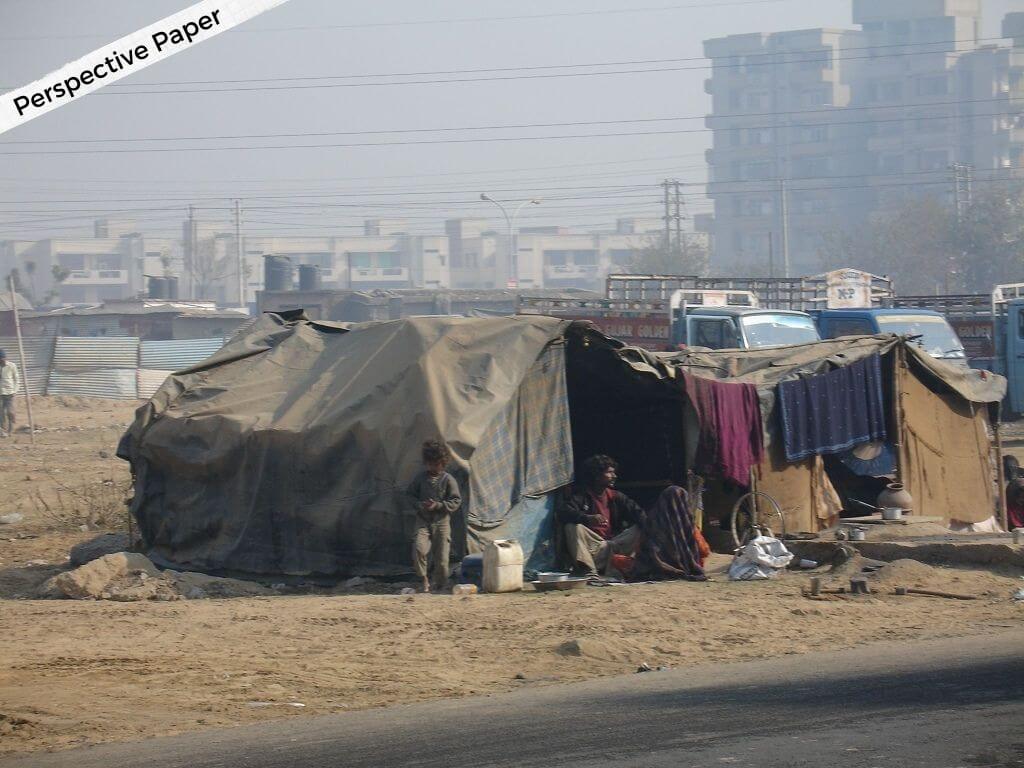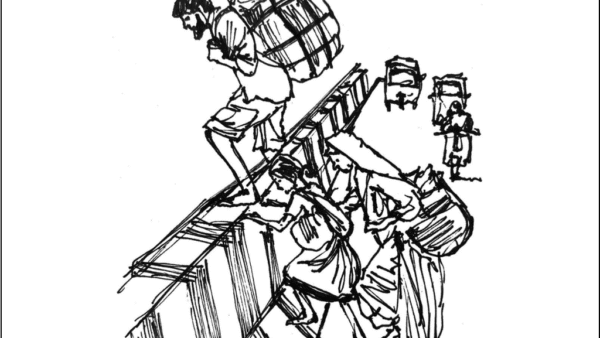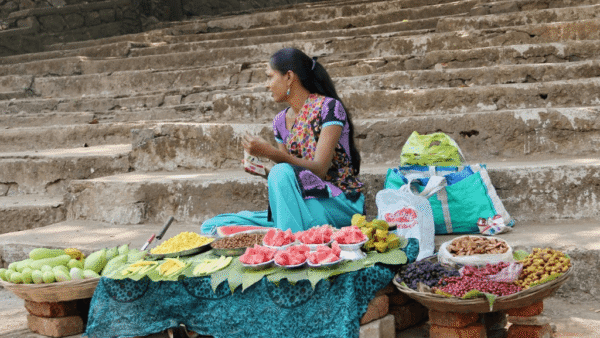The overnight lockdown of the entire economy in response to the COVID pandemic brought into stark focus the immense predicaments of urban poverty. The extreme precariousness of their livelihoods was exposed, when in the absence of any significant job security and social protection for nine out of 10 workers, they were suddenly thrust into mass hunger of a scale and desperation not witnessed for many decades. Privileged India watched the face of urban poverty as millions of casual migrant workers and their families defied the suddenly-announced national lockdown and police batons to walk hundreds of kilometres to reach their families in their villages. Cities offered them work opportunities but not the comfort of their community or home.
Urban poverty and marginalisation remain our challenges. While each city has various vulnerable groups who face disproportionate burdens of livelihood, nutritional insecurity and ill-health, the challenge emerges of identifying and demarcating such groups in every city. Vulnerabilities are often intersecting, overlapping, and mutually constitutive. Most commonly, vulnerability is officially seen as coterminous with low incomes or slum dwelling. The heterogeneity of urban populations is not captured in most published data, thereby masking the extreme diversity of urban poor sub-groups.
Identification of the urban poor
As a member of the Hashim Committee (constituted by the erstwhile Planning Commission to advise it about ways to identify the urban poor), I recommended a multi-vulnerability-based identification of the urban poor. It encompassed:
i) Residential or habitat-based vulnerability includes urban persons/households who are houseless, living in kuchha or temporary houses, facing insecurity of tenure, and unserved or under-served with basic public services like sanitation, clean drinking water and drainage.
ii) Social vulnerability which includes gender-based vulnerabilities such as those faced by women-headed households, age-based vulnerabilities such as minor-headed households and the aged, and health vulnerabilities such as disability and illness.
iii) Occupational vulnerability is faced by persons/households who are without access to social security, susceptible to significant periods of unemployment, as well as those who by virtue of having no access to skills training and formal education or the stratifications of gender, religion and caste, are ‘locked into’ certain types of occupation such as informal and casual work with uncertain wages/earnings and/or subject to unsanitary, unhealthy and hazardous work conditions, often times bonded/semi-bonded in nature or undignified and oppressive conditions.
The need for a multi-vulnerability-based index has not been greater. Urbanisation is one of the most significant demographic trends of the 21st century, expected to significantly boost workforce participation, capital investment, and innovation. The proportion of the urban population in India has increased from 10.8 per cent in 1901 to 31.2 per cent in 2011, and is expected to increase to 50 per cent over the next few decades. There is considerable variation in urbanisation rates across states; Maharashtra and Tamil Nadu are home to the largest number of urban residents in the country while other states are urbanising rapidly.
Whether in slum dwellings or not, many among the urban poor reside in spaces marked by the lack of one or more of the following: Access to improved water supply, access to improved sanitation, sufficient living area, durability of construction, and security of tenure. Many survive in makeshift, temporary constructions fashioned out of plastic, brick, tin, and other waste materials that may be unsafe and hazardous or simply live on the road, under flyovers, railway platforms, and outside shops without shelter and in unsafe conditions.
Each of these “slum” characteristics has differential deleterious implications for the health and well-being of the urban poor. Meagre access to safe water and basic sanitation – a common problem for most urban poor – has considerable adverse effects on physical and cognitive development of children, it results in a range of gastrointestinal disorders in adults, and makes it difficult for girls and women to maintain personal and menstrual hygiene. Poor housing confers little or no physical protection against heat, cold, pollution, traffic, crime, theft, accident, and physical and sexual abuse.
Children, adolescent girls, women living in such tenuous circumstances are particularly at risk of sexual violence, especially when they sleep in the open or in insecure dwellings, collect water, or defecate in the open. Densely populated living conditions in slums places household members at risk for infectious diseases such as tuberculosis, acute respiratory infections, and various skin disorders. Further, many urban poor live in poor, ill-served and disadvantaged parts of a city such as city outskirts, low lying areas, near factories and construction sites, and are at risk for floods and outdoor air pollutants.
Lastly, the insecurity of tenure for most urban poor compounds the lack of access to basic amenities and opportunities, which other city dwellers have, especially education, health care, and employment. Additionally, insecure living conditions cause psycho-social stress. Apart from the harsh physical environment, the social environment of slums is also adverse: High rates of crime can cause physical and emotional trauma as well as financial loss for urban residents.
People migrate to urban areas for work opportunities and to establish a better life for themselves and their families. Lack of landholdings, and viable economic opportunities in rural areas “push” the rural poor to urban areas in search of work. Yet most Indian cities, from mega cities to small towns, lack the necessary basic infrastructure in terms of housing, water and sanitation, employment opportunities, and services such as health care and education to accommodate and meet the needs of migrants. This has adverse implications for their health, wellbeing and productivity. Paradoxically, therefore, cities have enclaves of prosperity and commerce alongside clusters of concentrated social, economic, and political disadvantage and exclusion.
Individuals, groups, and even communities may experience social exclusion due to caste, class, religion, occupational status, and residence. Further, the experience of exclusion can take place at different levels – individual, family, community, societal, institutional, and policy levels. There are also some groups such as the homeless and the mentally ill who may experience social isolation across all levels.
The urban poor are often employed in the informal sector, may be seasonal or cyclical migrants who come to cities at certain times of the year for work, have tenuous residential status, live in insalubrious conditions, have financial responsibilities to their families in villages, and lack access to health care, education, financial services, and social capital. These factors individually and together impact their ability to respond to or fulfil basic needs of shelter and security, and food and water. Given their itinerant, illegal, unrecognised, and marginalised status, the urban poor may have to pay more for basic amenities such as water and toilets that may otherwise be widely available and affordable for the others in cities.
As far back as in 1896, during the plague epidemic in Bombay, a colonial administrator wrote that if such mass epidemic deaths are to be prevented in the future, every resident of the city must be assured two things – air and water – and these come completely free. But we never seem to learn policy lessons to uphold the rights to life of dignity of the poorest of our people. We did not learn this then under a colonial government. There are no signs that we are learning any lessons from the devastating pandemic of 2020-22 and the urban poor people’s experience of that time.
The economy of a city, and the lives of the middle-class and the rich in them, depend in multiple ways on the labour of the urban poor. But we build our cities and write our policies in ways that continue to exclude them, denying them rights including the Right to the City. This must change.
Harsh Mander is a human rights and peace worker, social activist, writer-researcher who works with survivors of mass violence, hunger, homeless persons and street children.
Cover photo: Creative Commons




